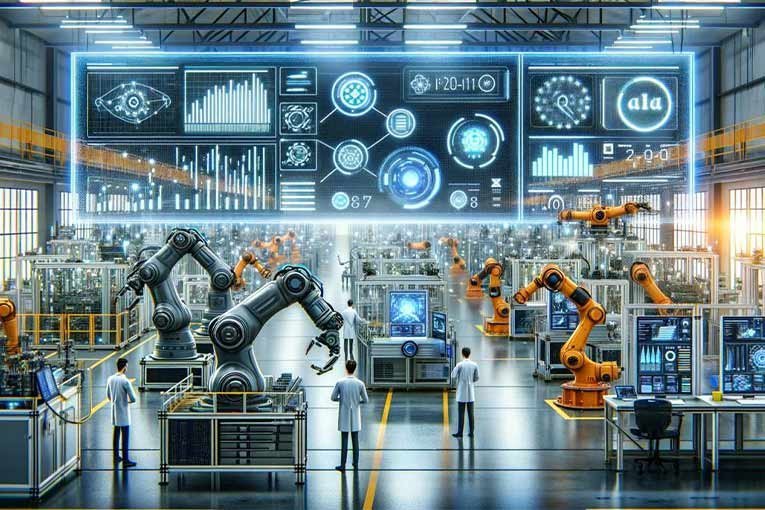The Rise of AI and Robotics in American Manufacturing
In recent years, the integration of artificial intelligence (AI) and robotics in American manufacturing has revolutionized the industry, leading to significant advancements in automation, efficiency, and productivity. These cutting-edge technologies have not only transformed traditional manufacturing processes but have also redefined the competitive landscape on a global scale.
Enhancing Automation and Efficiency
AI and robotics have played a pivotal role in streamlining manufacturing operations by automating repetitive tasks and optimizing production processes. By leveraging AI algorithms and machine learning capabilities, manufacturers can analyze vast amounts of data to make real-time decisions, leading to improved efficiency and reduced operational costs. Robotics, on the other hand, have enabled the execution of complex tasks with precision and speed, resulting in increased productivity and higher output levels.
One of the key innovations driving this transformation is the development of collaborative robots, or cobots, which work alongside human workers to enhance productivity and safety in manufacturing environments. These cobots are equipped with advanced sensors and AI algorithms that enable them to adapt to changing conditions and interact seamlessly with human operators, leading to a more flexible and agile production process.
Industry Leaders in AI and Robotics
Several American manufacturing companies have emerged as pioneers in adopting AI and robotics technologies to drive innovation and competitiveness. Companies like Tesla, General Electric, and Boeing have invested heavily in developing state-of-the-art manufacturing facilities that integrate AI-driven automation systems and robotic technologies to enhance production efficiency and product quality.
Tesla, for instance, has implemented a highly automated production line for its electric vehicles, where AI algorithms are used to optimize manufacturing processes and ensure quality control at every stage of production. General Electric has also embraced AI and robotics in its manufacturing operations, utilizing predictive maintenance algorithms and robotic automation to improve equipment reliability and reduce downtime.
Impact on the Workforce and Global Competitiveness
While the integration of AI and robotics has undoubtedly led to increased efficiency and productivity in American manufacturing, it has also raised concerns about the impact on the workforce. As automation technologies continue to advance, there is a growing fear that robots and AI systems could replace human workers, leading to job displacement and economic uncertainty.
However, proponents of AI and robotics argue that these technologies have the potential to create new job opportunities and enhance the skills of the existing workforce. By automating routine tasks, workers can focus on more complex and creative aspects of manufacturing, leading to a more skilled and productive workforce.
From a global perspective, the adoption of AI and robotics in American manufacturing has positioned the country as a leader in advanced manufacturing technologies, enhancing its competitiveness in the global market. By leveraging cutting-edge technologies to drive innovation and efficiency, American manufacturers can deliver high-quality products at competitive prices, attracting investment and driving economic growth.
The integration of AI and robotics in American manufacturing represents a transformative shift that is reshaping the industry in profound ways. By enhancing automation, efficiency, and productivity, these technologies are revolutionizing traditional manufacturing processes and driving innovation across all sectors. While there are challenges ahead in terms of workforce adaptation and economic implications, the benefits of AI and robotics in manufacturing are clear – improved efficiency, higher productivity, and enhanced global competitiveness. As American manufacturers continue to embrace these technologies, the future of manufacturing looks brighter than ever.







